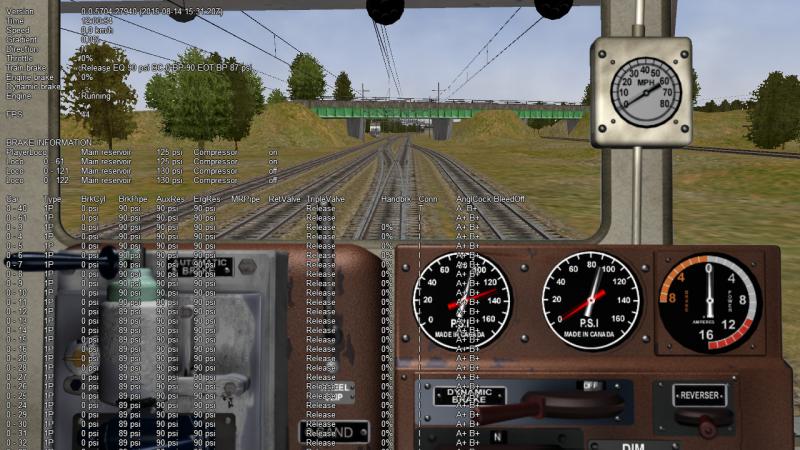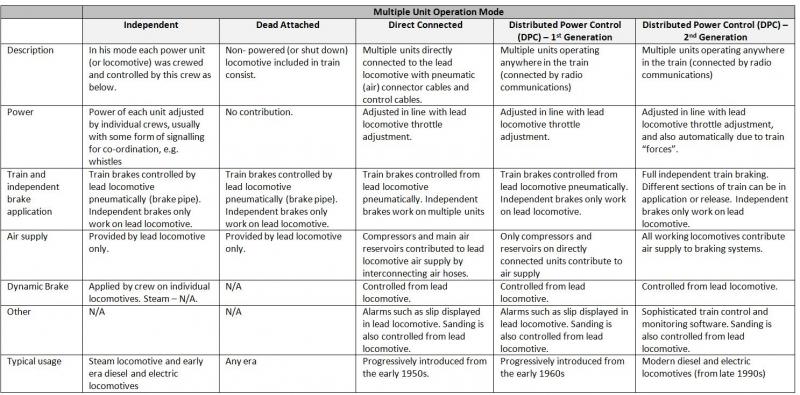
I have prepared this function to check if all locos in a consist contribute to put air in the train airpipe.
This picture, related to a train with two leading locomotives and two locos on the back of the train, shows an apparently good news and a bad news:
- the main res pressure of both leading locos decreases and their compressor starts when needed recharging the main res
- this does not occur for both trailing locos (of same type).
After some investigation, I found following comment in method FindLeadLocomotives of Train.cs
//================================================================================================//
/// <summary>
/// Find lead locomotive
/// <\summary>
// FindLeadLocomotives stores the index of a single locomotive, or alternatively multiple locomotives, such as
// in the case of MU'd diesel units, the "first" and "last" values enclose the group of locomotives where the
// lead locomotive (the player driven one) resides. Within this group both the main reservoir pressure and the
// engine brake pipe pressure will be propagated. It only identifies multiple units when coupled directly together,
// for example a double headed steam locomotive will most often have a tender separating the two locomotives,
// so the second locomotive will not be identified, nor will a locomotive added at the rear of the train.
So with an explicit decision locomotives grouped together with the player locomotive have the main reservoir propagated, while locomotives isolated from the player locomotive don't have it. This is correct because there is no direct connection of the brake pipe linking the main brake reservoirs, however is it correct that this means also that such isolated locomotives don't participate into braking the train and participate only in providing traction to the train?
Blueprint here: https://blueprints.l...a-for-all-locos

 Log In
Log In Register Now!
Register Now! Help
Help









